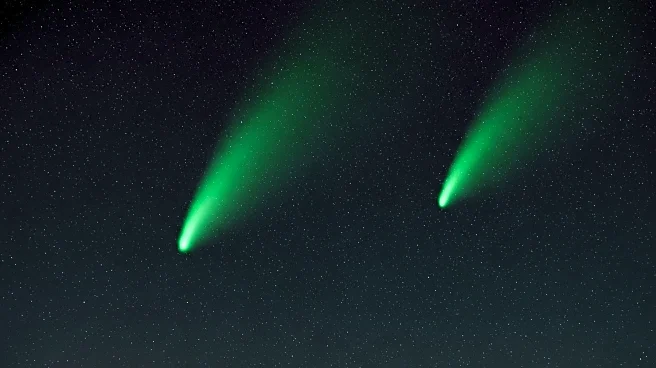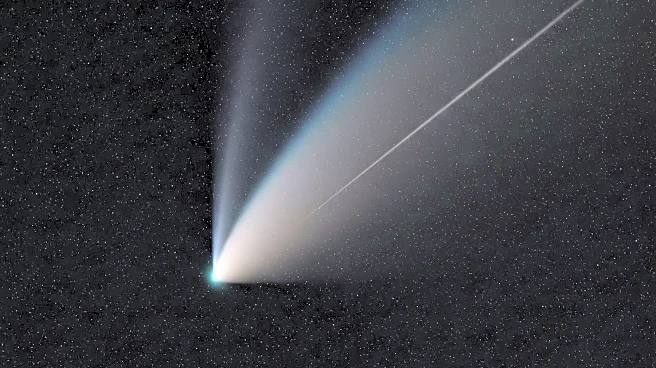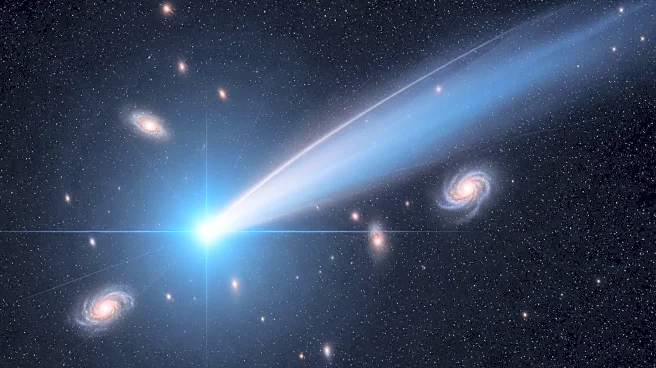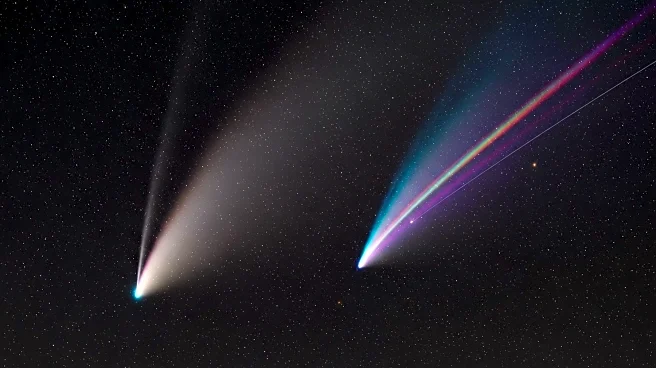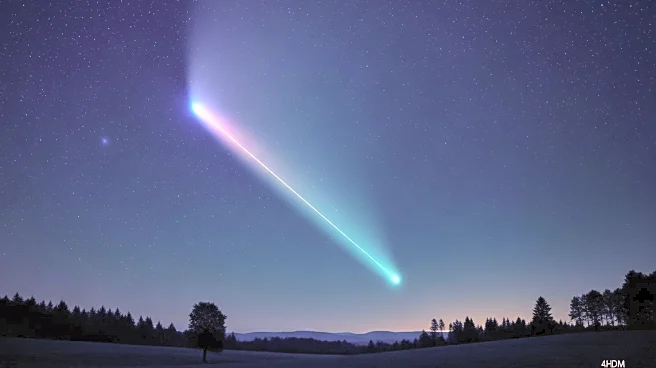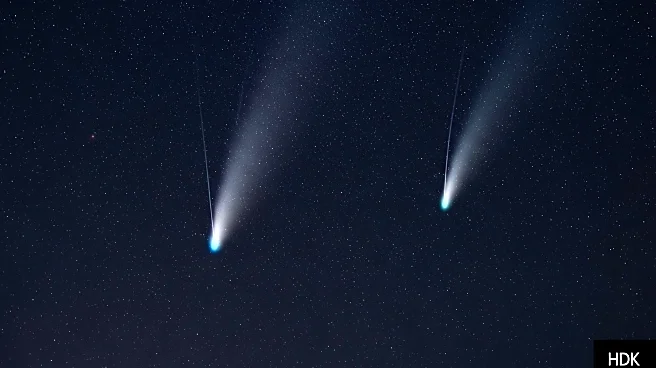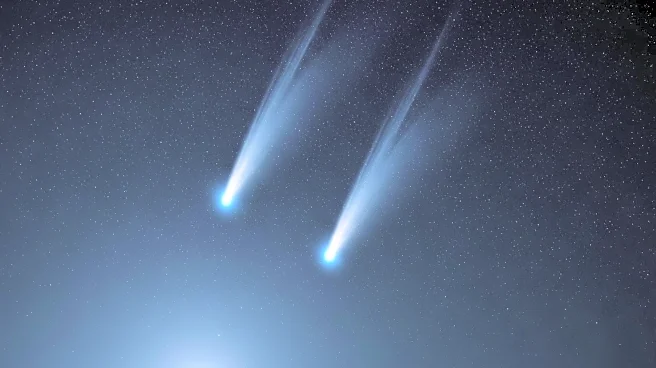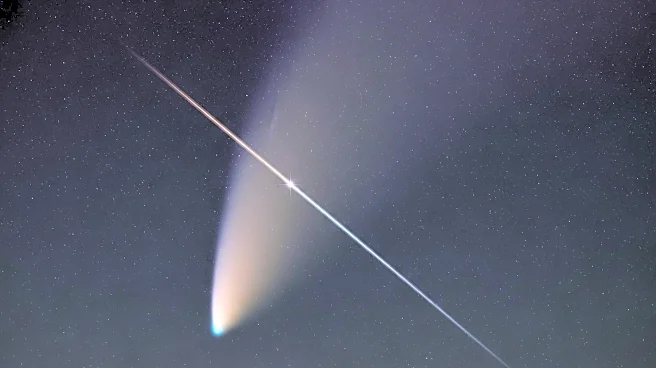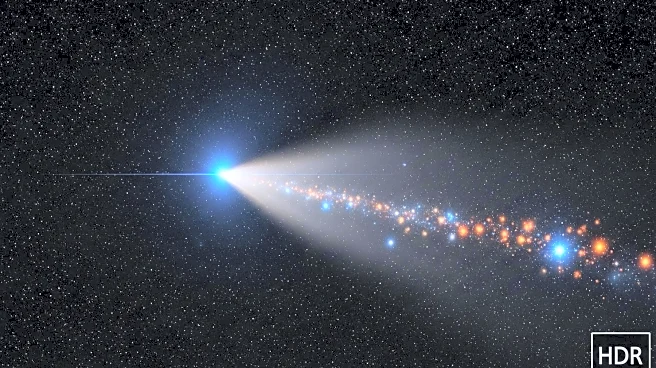What's Happening?
Two greenish-hued comets, C/2025 A6 (Lemmon) and C/2025 R2 (SWAN), are currently visible from the Northern Hemisphere as they pass through the inner solar system. Comet Lemmon, discovered by the Mount Lemmon Survey, is expected to be visible to the naked eye when it reaches its closest point to Earth around October 21. Comet SWAN, discovered by an amateur astronomer using NASA's Solar & Heliospheric Observatory, can be seen with binoculars or small telescopes. Both comets are visible through the end of October, with Comet Lemmon appearing near the Big Dipper before sunrise and Comet SWAN visible in the evening sky.
Why It's Important?
The appearance of two comets in the same month is a rare astronomical event, providing skywatchers with a unique opportunity to observe these celestial objects. Comet Lemmon's potential visibility to the naked eye makes it particularly exciting for amateur astronomers and the general public. These comets offer insights into the composition and behavior of icy bodies in the solar system, contributing to scientific understanding of cometary dynamics. The event also highlights the role of amateur astronomers in discovering and tracking celestial phenomena, emphasizing the collaborative nature of astronomical research.
What's Next?
As Comet Lemmon approaches its closest point to Earth, skywatchers are encouraged to observe it in the predawn sky, transitioning to the evening sky by October 21. Comet SWAN will continue to rise higher on the horizon after sunset, potentially brightening before its closest approach to Earth around October 20. Ideal viewing conditions include clear weather and minimal light pollution. The appearance of these comets may inspire increased interest in astronomy and skywatching, potentially leading to more discoveries by amateur astronomers. Additionally, the scientific community will continue to study these comets to gain further insights into their properties and trajectories.

